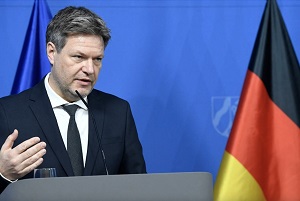
Horse mackerel processing plant to unlock quota value
Despite suffering a 10% year-on-year horse mackerel quota reduction, Bidvest Namibia through its subsidiary Bidvest Fishing, revealed this week it has big plans to improve efficiencies and will in the foreseeable future build a processing plant for horse mackerel in Walvis Bay. The announcement was at the presentation of Bidvest’s financial results this week.
In September 2014, Bidvest Fisheries Managing Director, Jan Arnold told the Economist that Bidvest Namibia was planning a N$500 million plant. Consultations aside, Bidvest is forging ahead following the completion of a feasibility study and by the end of this year will have completed the required Environmental Impact Assessment and the detailed civil works design, according to an optimistic Arnold.
Said Arnold “management has concluded the initial feasibility study to convert the current horse mackerel fishing operation to a shore-based processing facility. The board has resolved to proceed with the environmental impact assessment and detailed design for the civil works.”
According to him, work on the much anticipated assessment is expected to start as soon as possible while construction of the plant will be financed through its own funds as well as external funding.
About the feasibility of the entire project he said “we paid a lot of money to get to this answer,” suggesting that the plant could be a success as Bidvest attempts to compete in the west African canned horse mackerel space against Chinese entities. Bidvest is hopeful it will be able to secure an optimal production input from local quota holders and its own quota allocation for the planned processing plant.
When the Economist spoke to Arnold in September last year he said that an experimental trawler was chartered which would fish in Namibian waters. The horse mackerel catch was transported to the Gendev processing facility where it was established that the fish can be processed on land without compromising the quality of the product.
“The aim of the next phase of the feasibility study is to determine how best to do this to make it a feasible option. This will include design work, product flow, cost estimates for the various components, [and] determination of feasibility/profitability. If this supports our planned shore processing concept, we will embark to seek approval on all levels and structuring of ownership and participation. This will be wide as we do not foresee Namibia establishing many such facilities as this could easily become a frenzy resulting in surplus capacity as is the case in the hake industry,” Arnold said the feasibility study incorporated the interpretation of the catches and quality reports from the experiment. “Various activities also carried out for the feasibility included the extraction of high value protein from fishmeal, normal bulk production, the production of value added products like crumbed portions, determining the vessels that will be utilised and the various methods of catching, and the creation of retail packs from specialised freezing methods” Arnold explained in an earlier response.











































